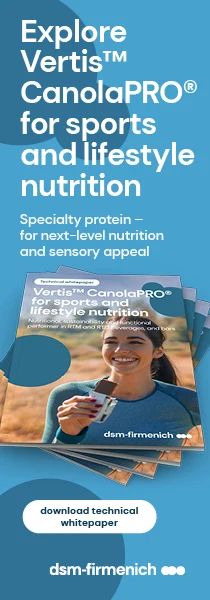EC to adjust fortified food standards based on EFSA’s latest vitamin A and β-carotene research
11 Jun 2024 --- The European Food Safety Authority (EFSA) Panel on Nutrition, Novel Foods and Food Allergens (NDA) released a scientific opinion on the revision of the tolerable upper intake level (UL) for preformed vitamin A and β-carotene following two requests from the European Commission (EC).
“The revision of the tolerable upper intake level for these vitamins and minerals is crucial for consumer safety as it enables the EC to set the maximum amounts of these nutrients added to foods (fortified foods) and food supplements in the EU,” an EFSA spokesperson, tells Nutrition Insight.
“EFSA’s work in this area is mandated by the EC to provide the necessary scientific basis for setting these limits. High intakes of some nutrients may lead to adverse health outcomes for human health.”
The Commission requests that the scientific evidence be reviewed about the tolerable ULs for vitamin A, folic acid, folate, vitamin D, vitamin E, iron, manganese, β-carotene and vitamin B6, including their authorized forms for the addition to fortified foods and food supplements for the general population and vulnerable subgroups, as appropriate. It also requests that recommendations be made.

The present opinion aims to update the UL for vitamin A, including both preformed vitamin A and β-carotene, to address the mandate received from the EC. Systematic reviews of the literature were conducted for priority adverse health effects of excess vitamin A intake, such as teratogenicity, hepatotoxicity and endpoints related to bone health.
Setting limits for fortified foods
The Commission requests that EFSA review the previous opinions of the Scientific Committee on Food (SCF) or the NDA Panel on the ULs and take recent scientific developments, methodologies and evidence into account. The guidelines of the SCF should be updated accordingly.
“The recommendation was based on two observational studies showing an association between high vitamin A intake and an increased risk of hip fracture in postmenopausal women. The Committee raised concerns about whether such an association was causally related and called for more data. The new data available does not support the causality of the association,” the spokesperson notes.
The SCF advised that the intake of preformed vitamin A be restricted to 1500 μg retinol equivalents (RE) a day in postmenopausal women based on its effects on bone mineral density and bone fracture risk. The SCF considered this dose protective for hepatotoxicity, with the lowest observed adverse effect level of 7500 μg a day from case reports.
“This is based on findings on bone density and risk of fracture that were reported at lower daily intakes (>1,500 μg RE/day) than other adverse effects. Recognizing that postmenopausal women are at greater risk of osteoporosis and bone fracture and that the upper limit (UL) may not adequately address the possible risk of bone fracture in particularly vulnerable groups, the SCF advised postmenopausal women to restrict their intake to 1500 μg RE per day,” the spokesperson says. EFSA and the NDA have provided an opinion on the UL for vitamin A and β-carotene.
EFSA and the NDA have provided an opinion on the UL for vitamin A and β-carotene.
Teratogenicity — anything a person is exposed to or ingests during pregnancy that is known to cause fetal abnormalities — as selected as the critical effect on which to base the UL for preformed vitamin A.
The panel proposes to retain the UL for preformed vitamin A of 3000 μg RE a day for adults. This UL applies to men and women, including women of childbearing age, pregnant and lactating women and postmenopausal women.
Based on available intake data, European populations are likely to stay within the UL for preformed vitamin A if the consumption of liver, offal and related products is limited to once a month or less.
Women who are planning to become pregnant or who are pregnant are advised not to consume liver products. Lung cancer risk was selected as the critical effect of excess supplemental β-carotene. The available data were not sufficient and suitable to characterize a dose-response relationship and identify a reference point; therefore, no UL could be established.
There is no indication that β-carotene intake from the diet is linked to poor health effects. However, smokers should avoid consuming food supplements containing β-carotene. The use of supplemental β-carotene by the general population should be limited to the purpose of meeting vitamin A requirements.
Supplementation trials
When developing the protocol to update the ULs for vitamin A and β-carotene, the NDA panel noticed that no new supplementation trials have been conducted or published with high doses of β-carotene (≥ 15–20 mg per day) after SCF evaluations and the Panel on Food Additives and Nutrient Sources added to Food (ANS). It found that the evidence for the adverse health effects of supplemental β-carotene was limited and conflicting.
“The EC and Member States are working on setting maximum amounts of vitamins and minerals in fortified foods and food supplements. EFSA has completed its scientific work on revising the UL for preformed vitamin A and β-carotene. It is now up to the EC and the member states to make use of this scientific advice and set maximum amounts of vitamins and minerals in fortified foods and food supplements,” the spokesperson says.
In the context of deriving a UL, the panel considered that supplemental β-carotene should be assessed as a source of vitamin A and for its potential to increase preformed vitamin A toxicity.
Tolerable ULs should be presented separately from 4–6 months onward until three years and the general population group from three years onward. It should also take the varying degrees of sensitivity of different consumer groups into consideration. Young children should be considered as a potentially sensitive consumer group.
The spokesperson notes: “EFSA’s scientific opinions are not legally binding. They support risk managers in their decisions, and public health bodies in member states for giving consumers advice.”
A data cleaning strategy was applied to exclude fortified foods from the composition database, including foods for weight reduction and single meal replacements, because the scope of the intake assessment was to consider natural sources of preformed vitamin A and β-carotene as well as β-carotene used as an additive.
The minimum content of vitamin A in these food categories is subject to regulatory requirements to guarantee an adequate supply of the nutrient to consumers. β-Carotene is not authorized for use in infant and follow-on formulae.
By Inga de Jong














